Tinting and toning laboratory.
Coloration (dyeing) of B & W 35 mm film movies using traditional procedures. Without the use of film cut. None film splice, none shortening. Durability more 100 years.
The set of samples, displayed at the picture, is created using strips of classic black/white film, whose pictures are formed by metallic silver. The silver is still present there, either as black and white image (tinting), or in chemically modified form (toning).
An individual page about samples, with larger pictures
Detailed information about displayed samples:
There are together 5 strips of film samples with different coloration - toning, tinting, or both toning+tinting. The first (upper) sample - there is one single frame of film without coloring (no toning, no tinting) for comparison. Followed by three frames only tinting - no toning, tinted to yellow-orange. The next three frames contain no tinting, brown toning. The second strip (as original used bw image with a line test, the highest resolution 160 lines/mm) - there is present only tinting, two colors: magenta (3 frames) and orange (4 frames). No toning there. The strip no. 3 is a test picture again, this one used for testing telecine equipments. Two frames colored yellow, next five green. Again, no toning there. Next two strips in this one package contain complete toning - blue, with or without tinting. The strip no. 4 contains two frames with azure tinting, what means that there are two frames with combination blue toning - azure tinting. Next three frames contain the combination of blue toning - magenta tinting. The last two frames contain only blue toning, no tinting. The last strip, no. 5, contains two film frames with only blue toning, followed by five frames with combination of blue toning - yellow tinting.
At described samples also possible to observe, that used method enables to move the exact position of color change, where requested. Sooner, say, between 1990 and 2008, used method was not so exact, and the color change was not so sharp. Occupied a place in the approximate range of the distance between two perforation holes, and the change was gradual, not as sharp as possible observe on the described set of samples.
At the samples 2 and 3, using bw test films (with standard, normalised frame positon exactly in the middle between perforation), is the color change position located also exactly in the middle between frames/perforation. At the sample one it is a little shifted, where needed (due to inaccuracy of the nitrate original), and at the samples 4 and 5 is the position shift (originated for the same reason) much better visible.

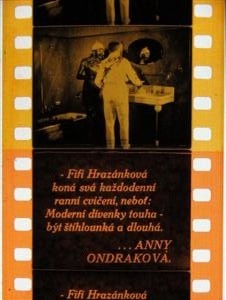 It is technologically upgraded and improved process, that has been tested and applied, for example, in VÚZORT (Prague, Czech Republic), but also elsewhere in the world, approximately between the years 1970 - 1990's. Some laboratories in the world use similar process for restoration purposes till today.
Used the original methods for dyeing of corresponding 35mm film sections - photographic film tinting using soluble dyes, and toning by chemical solutions, so that the durability of the resulting film is much higher than in the case of three-layer color film.
It is technologically upgraded and improved process, that has been tested and applied, for example, in VÚZORT (Prague, Czech Republic), but also elsewhere in the world, approximately between the years 1970 - 1990's. Some laboratories in the world use similar process for restoration purposes till today.
Used the original methods for dyeing of corresponding 35mm film sections - photographic film tinting using soluble dyes, and toning by chemical solutions, so that the durability of the resulting film is much higher than in the case of three-layer color film.
However, during such 35mm film processing, it was necessary to separately perform a total of 5 follow-up, but completely separate processes:
1. The film was first necessary to divide (by film cutting) into individual scenes according to colors. 2. Sections of the same colors connect together (using the film splicing). 3. Only then apply the appropriate dyeing process. 4. Thereafter again divide film into individual scenes. 5. Finally scenes glue together back (using the film splicing again), according to the original film script.
 By the way, from this description it clearly follows, that during this old process (not used now), every scene of the film was both at the beginning, and also at the end, shortened by two film frames, i.e. by a total of four.
By the way, from this description it clearly follows, that during this old process (not used now), every scene of the film was both at the beginning, and also at the end, shortened by two film frames, i.e. by a total of four.
 During the application of our process is not used cutting of the film nor film splicing, and the whole roll of the film is not divided or interrupted in any way, let alone even shortened.
Individual different processes are separately applied very precisely only to those portions of the film, to which they relate, with the accuracy of a fraction of a millimeter, ie visually completely unnoticeable.
Coloring of each scene of the film, thanks to an accurate (digital) control the speed of movement of the film in solutions, and exposure time on all of its segments in them completely uniform, from the first to the last film frame.
In addition, there are also used methods of continuous control of solutions concentration and their regeneration.
During the application of our process is not used cutting of the film nor film splicing, and the whole roll of the film is not divided or interrupted in any way, let alone even shortened.
Individual different processes are separately applied very precisely only to those portions of the film, to which they relate, with the accuracy of a fraction of a millimeter, ie visually completely unnoticeable.
Coloring of each scene of the film, thanks to an accurate (digital) control the speed of movement of the film in solutions, and exposure time on all of its segments in them completely uniform, from the first to the last film frame.
In addition, there are also used methods of continuous control of solutions concentration and their regeneration.
There is no need to make any new film splicing adds on any film, that passed through our laboratory. There may be some film splices / cutting present on the films processed by us only in such a case, if they there were present before our work.
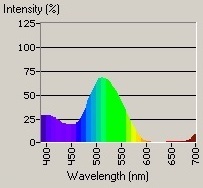 Our skills and abilities:
spectral measurement (using laboratory equipment, for instance X-Rite, Hamamatsu etc.)
prepare solutions and testing - compare to original
consultation of tests and outcomes, compare to known works used many years ago, before approximately one hundred years.
It is also possible to apply any color shade according to the customer, for instance in the case of incompleteness of the original, when it is possible to estimate only some colors, or has been maintained only written records about colors.
Our skills and abilities:
spectral measurement (using laboratory equipment, for instance X-Rite, Hamamatsu etc.)
prepare solutions and testing - compare to original
consultation of tests and outcomes, compare to known works used many years ago, before approximately one hundred years.
It is also possible to apply any color shade according to the customer, for instance in the case of incompleteness of the original, when it is possible to estimate only some colors, or has been maintained only written records about colors.
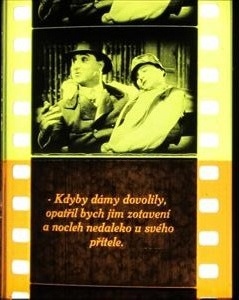 Of course it is also possible to carry out any alterations, usually to achieve higher optical density of the resulting coloration, for the purpose of eliminating possible fading due to aging of the original.
Of course it is also possible to carry out any alterations, usually to achieve higher optical density of the resulting coloration, for the purpose of eliminating possible fading due to aging of the original.
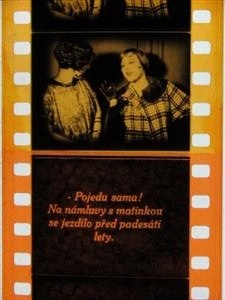 For the purpose of maintaining the highest possible positional accuracy of the instantaneous color changes, replicating the position on the original film:
For the purpose of maintaining the highest possible positional accuracy of the instantaneous color changes, replicating the position on the original film:
We are able of such an exact positioning of color change, better than 0.1 mm. Not only standard, normed position of color change, exactly in a middle between two perforation holes. It is also possible to create any positive or negative corrections of color change position. Similar, shifted positions of color change, due to the film splicing inaccuracy, offset, are very often present on nitrate film originals.
Our technology combines known recipes, used in past (very durable color dyes for tinting, the same very stable inorganic substances, forming colors of toned sections), with high precise positioning using technologies similar for instance to CAD, 2D and 3D printing, and very precise (measured and controlled) movement and positioning of B&W 35mm film inside the machine.
 This makes it possible to copy the inaccuracy of the position of the color change by any value in lengths of up to twice the spacing of the perforation holes (maximum possible inaccuracy). There is no distracting of color perception during the scene (color) change, and the copy would be the most similar to the original as possible.
This makes it possible to copy the inaccuracy of the position of the color change by any value in lengths of up to twice the spacing of the perforation holes (maximum possible inaccuracy). There is no distracting of color perception during the scene (color) change, and the copy would be the most similar to the original as possible.
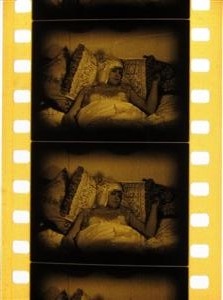 The set of samples, displayed on the picture above, is created from strips of classic black/white film, whose pictures are formed by metallic silver.
The silver is still present there, either as black and white image (tinting), or in chemically modified form (toning).
The set of samples, displayed on the picture above, is created from strips of classic black/white film, whose pictures are formed by metallic silver.
The silver is still present there, either as black and white image (tinting), or in chemically modified form (toning).
The colors and pictures (film frames) of the samples may vary, depending on the material used, but on everyone will be present 5 film strips, every 7 film frames, and in total 7 color changes.
We are experts in testing and measuring colors (spectroscopy, colorimetry, CCD color response discovery, calculation and adjustation). More 20 years. Working with cinematographic films more 30 years.
 Our devices, on which the movies processing take place, combine a number of principles of photographic and film equipment, measurement and instrumentation devices.
Sometime and inside some sections it works like a classical developing machine for black and white or color movies with controlled and dosed access of solutions to the emulsion of the film, sometimes uses technology similar to the principles of analog, digital or 3D printing, or CAD technology.
Moreover, it uses some of the principles of Technicolor process, further spectral and colorimetry measurements, lengths and distances measurement, mixing and circulation of solutions, determination of the concentration, measuring of the number and speed of rotation (differs at different places).
Our devices, on which the movies processing take place, combine a number of principles of photographic and film equipment, measurement and instrumentation devices.
Sometime and inside some sections it works like a classical developing machine for black and white or color movies with controlled and dosed access of solutions to the emulsion of the film, sometimes uses technology similar to the principles of analog, digital or 3D printing, or CAD technology.
Moreover, it uses some of the principles of Technicolor process, further spectral and colorimetry measurements, lengths and distances measurement, mixing and circulation of solutions, determination of the concentration, measuring of the number and speed of rotation (differs at different places).
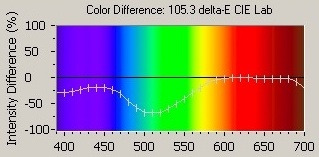 It uses a number of newly developed principles, either during effect on solutions to the gelatine film layer, protection against the action of solutions at designated places, removing of the remaining chemicals from the emulsion layer, the protection of the film from the substrate side and from the side of the emulsion.
Their functions are provided by a number of custom software and hardware solutions and mechanisms, developed and tested during a number of years.
It uses a number of newly developed principles, either during effect on solutions to the gelatine film layer, protection against the action of solutions at designated places, removing of the remaining chemicals from the emulsion layer, the protection of the film from the substrate side and from the side of the emulsion.
Their functions are provided by a number of custom software and hardware solutions and mechanisms, developed and tested during a number of years.
 The result is completely intact film, that is on no matter how long sections completely colored with the same principle, and almost indistinguishable from films originating from the period approximately between the years 1900-1930, with at least the same or more likely much longer durability.
Instead of very unstable nitrocellulose are now made at much more stable acetate or almost infinitely stable polyester base.
The result is completely intact film, that is on no matter how long sections completely colored with the same principle, and almost indistinguishable from films originating from the period approximately between the years 1900-1930, with at least the same or more likely much longer durability.
Instead of very unstable nitrocellulose are now made at much more stable acetate or almost infinitely stable polyester base.
 In addition, moreover, it does not contain even one film splice more, and is not shortened by a single frame, against the original condition of black and white copies, as were made in any of today's film lab.
In addition, moreover, it does not contain even one film splice more, and is not shortened by a single frame, against the original condition of black and white copies, as were made in any of today's film lab.
In conventional three-layer color films are their three dyes formed during the development due to the reaction of color developer with dye-forming components, and these films are almost degraded by fading, sometimes even after 10 years, or at most for a few decades. The durability of the colors used in our process is incomparably higher than that of color film, and is estimated hundreds of years. Similar like the Technicolor process.
In past, approximatelly from 1990, were in our laboratory applied described colour processes to more than 150 films. Some examples named in following list (somewhere only czech names will be soon appended with their english translations)
Some examples of film names, that passed through our laboratory:
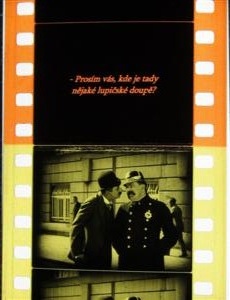
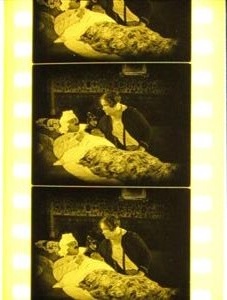 Adam a Eva
Antonet modelem
Arab
Babinský
Besteigung des Krimml's
Bezejmenná
Bludné duše
Blůzičkový král
Bob Stanley - Postrach lupičů
Bourec morušový
BOX
Bujná fantazie
Bílý ráj
Chov husí v libuši u Prahy
Cikáni
Adam a Eva
Antonet modelem
Arab
Babinský
Besteigung des Krimml's
Bezejmenná
Bludné duše
Blůzičkový král
Bob Stanley - Postrach lupičů
Bourec morušový
BOX
Bujná fantazie
Bílý ráj
Chov husí v libuši u Prahy
Cikáni
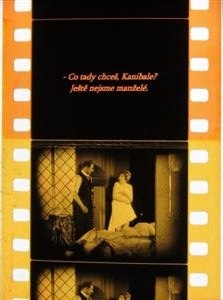
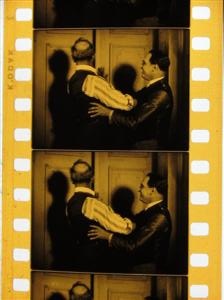 Der Fluch
Der Rosenkreuzer
Der Schatz (German intertitles)
Der Schatz (Czech intertitles)
Divoké krásy Walesu
Do nového života
Duše rostliny
Dvojí život
Dáma z velkého světa
Démon nenávisti
Ein Heldenkampf
Eugen Onegin
Fedora
Felix v Africe
Feďův pes
Der Fluch
Der Rosenkreuzer
Der Schatz (German intertitles)
Der Schatz (Czech intertitles)
Divoké krásy Walesu
Do nového života
Duše rostliny
Dvojí život
Dáma z velkého světa
Démon nenávisti
Ein Heldenkampf
Eugen Onegin
Fedora
Felix v Africe
Feďův pes
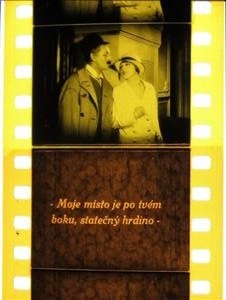
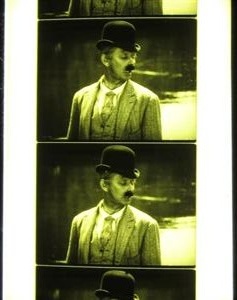 Figaro
FOX
Francouzská riviéra
Francouzské Alpy
Frauenehre
Grimasa Parise
Hanácko - Valašská výstava
Horstvo a led
Hotel "Dales", Hard Boiled 1926
Hrabě Monte Christo
Hřbitovy
Josef Kajetán Tyl
Kocour Fousek plave o cenu
La Mort
Lenost
Figaro
FOX
Francouzská riviéra
Francouzské Alpy
Frauenehre
Grimasa Parise
Hanácko - Valašská výstava
Horstvo a led
Hotel "Dales", Hard Boiled 1926
Hrabě Monte Christo
Hřbitovy
Josef Kajetán Tyl
Kocour Fousek plave o cenu
La Mort
Lenost
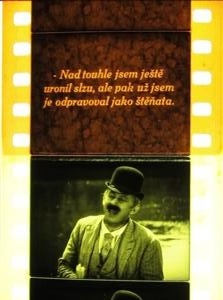
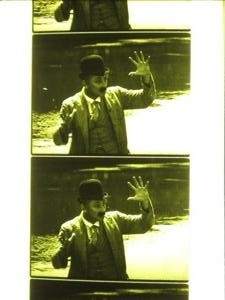 Lev salónů
Lov rybníku Rožmberka
Láska bajadéry
Lásky Kačenky Strnadové
Madame Dubarry
Manon Lescaut
Matka Kráčmerka
Milenka Nell
Mladý Medardus
Mnichovy memoiry
Na zapovězených cestách
Nahá dívka
Neohrožený Tom
Nepravá lupička
Lev salónů
Lov rybníku Rožmberka
Láska bajadéry
Lásky Kačenky Strnadové
Madame Dubarry
Manon Lescaut
Matka Kráčmerka
Milenka Nell
Mladý Medardus
Mnichovy memoiry
Na zapovězených cestách
Nahá dívka
Neohrožený Tom
Nepravá lupička

 Nevěsta bouře
Niagara v zimě
Nikyho velebné dobrodružství
Nocturno lásky
Nosferatu
Noční děs
Návrat k Sionu
Několik pohledů na Fujisan
Několik pohledů na Macušimu
O velkou cenu
Obrázky z Japonska
Orlové velké revoluce
Orlí oko
Ost & West
Nevěsta bouře
Niagara v zimě
Nikyho velebné dobrodružství
Nocturno lásky
Nosferatu
Noční děs
Návrat k Sionu
Několik pohledů na Fujisan
Několik pohledů na Macušimu
O velkou cenu
Obrázky z Japonska
Orlové velké revoluce
Orlí oko
Ost & West

 Otroci temnot
Paličova dcera
Pavouci
Plavba po vorech z Hluboké do Štěchovic
Pomsta Bartonova
Poslední dobrodružství Nicka Cartera
Poslední působiště
Postrach silnic (Tom Mix 1919)
Poutní místo Nikko
Prašnovo tajemství
Pražský flamendr
Princezna Fantočka
Procházka starou Paříží
Pán sedmi moří
Pět smyslů člověka
Otroci temnot
Paličova dcera
Pavouci
Plavba po vorech z Hluboké do Štěchovic
Pomsta Bartonova
Poslední dobrodružství Nicka Cartera
Poslední působiště
Postrach silnic (Tom Mix 1919)
Poutní místo Nikko
Prašnovo tajemství
Pražský flamendr
Princezna Fantočka
Procházka starou Paříží
Pán sedmi moří
Pět smyslů člověka

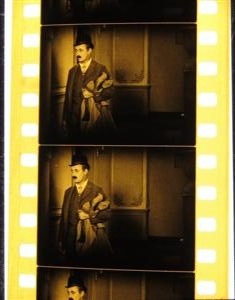 Přejezd soutěsek La Cére
Quo Vadis
Rajská růže
Rienzi
Roháč obecný
Romeo
Román korunního prince
Rozběsněné živly
Rozsudek pouště
Rudý meč
Salome
Sascha
Seine Hoheit
Senzace v Edenu
Spiritismus
Přejezd soutěsek La Cére
Quo Vadis
Rajská růže
Rienzi
Roháč obecný
Romeo
Román korunního prince
Rozběsněné živly
Rozsudek pouště
Rudý meč
Salome
Sascha
Seine Hoheit
Senzace v Edenu
Spiritismus
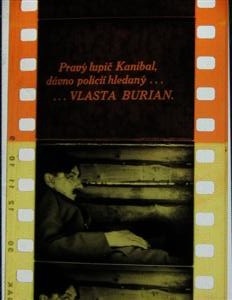
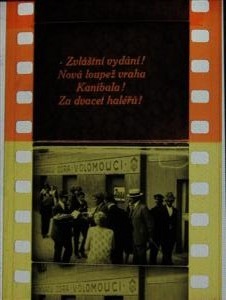 Stadt in Sicht (1923)
Stavitel chrámu
Starý hřích (1929)
Století ropy
Strandgut
Strašidelný zámek
Strýček z Ameriky (1929)
Středozemním mořem
Sudety
Sumurun (1920)
Syn hor (1925)
Tajemství Lucerny
Taras Bulba
Texasští jezdci
The light of Asia
Stadt in Sicht (1923)
Stavitel chrámu
Starý hřích (1929)
Století ropy
Strandgut
Strašidelný zámek
Strýček z Ameriky (1929)
Středozemním mořem
Sudety
Sumurun (1920)
Syn hor (1925)
Tajemství Lucerny
Taras Bulba
Texasští jezdci
The light of Asia
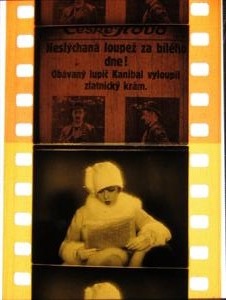
 Tom Mix Nebojsa
Tonbilder
Toreador
TRILBY
Tři počestní darebové, 1926
Ukřižovaná, 1921
Univerzity světa
V ráji mořských ptáků
Valašský rok v Rožnově pod Radhoštěm
Ve spárech lupičů
Ve stínu trůnu
Vlny mlčí
Vykoupení
Vášeň
Výstaviště
Tom Mix Nebojsa
Tonbilder
Toreador
TRILBY
Tři počestní darebové, 1926
Ukřižovaná, 1921
Univerzity světa
V ráji mořských ptáků
Valašský rok v Rožnově pod Radhoštěm
Ve spárech lupičů
Ve stínu trůnu
Vlny mlčí
Vykoupení
Vášeň
Výstaviště
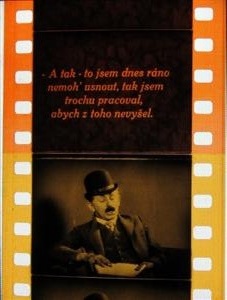
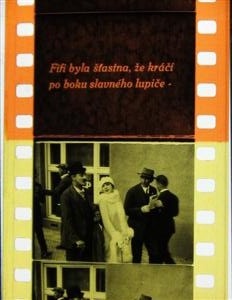 Wolves of kultur
Z Prahy parníkem do Litoměřic
Za svobodu národa, 1920
Za československý stát, 1928
Zajatá duše
Zaprodán
Země gejzírů
Země zaslíbená
Zimní neděle na Ještědu
Záhadný fakír
Západní expres
Zápas na lokomotivě
Závist
Závěť zlatokopova, 1926
Černoši z Bari
Wolves of kultur
Z Prahy parníkem do Litoměřic
Za svobodu národa, 1920
Za československý stát, 1928
Zajatá duše
Zaprodán
Země gejzírů
Země zaslíbená
Zimní neděle na Ještědu
Záhadný fakír
Západní expres
Zápas na lokomotivě
Závist
Závěť zlatokopova, 1926
Černoši z Bari
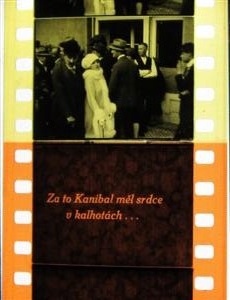
 Červená Karkulka
Šachta
Šivu
Šmudlík a Leskulinka
Švadlenka
Židovka
Červená Karkulka
Šachta
Šivu
Šmudlík a Leskulinka
Švadlenka
Židovka
Some samples of our work: (photos made wittingly using raster base, resolution not high)
Working with film "MILENKY STARÉHO KRIMINÁLNÍKA" The Lovers of an Old Criminal (An Old Gangster’s Molls) Vlasta Burian, Anny Ondráková (Anny Ondra), Jindřich Plachta, Saša Rašilov

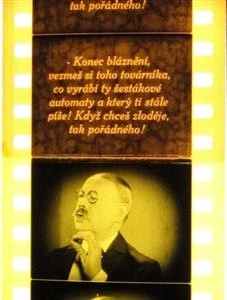
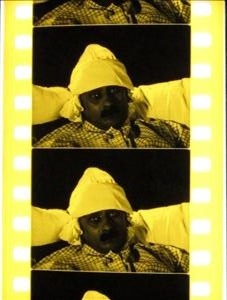
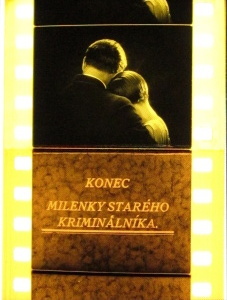

























Miroslav Kňap - 604 123 394
Provádění lakýrnických, natěračských a malířských prací, opravy fasád a nátěry strojních zařízení, elektromontážní práce.
604 123 394
If interested in nature problematics, look HERE (a page of our great fans and supporters)
.jpg)